[Skullcaps: The Genus Scutellaria East of the Cascade Mts. of Oregon and Washington]
Narrowleaf Skullcap, Narrow-leaf Skullcap
Scutellaria angustifolia ssp. angustifolia
Synonyms: Scutellaria angustifolia var. angustifolia, Scutellaria veronicifolia
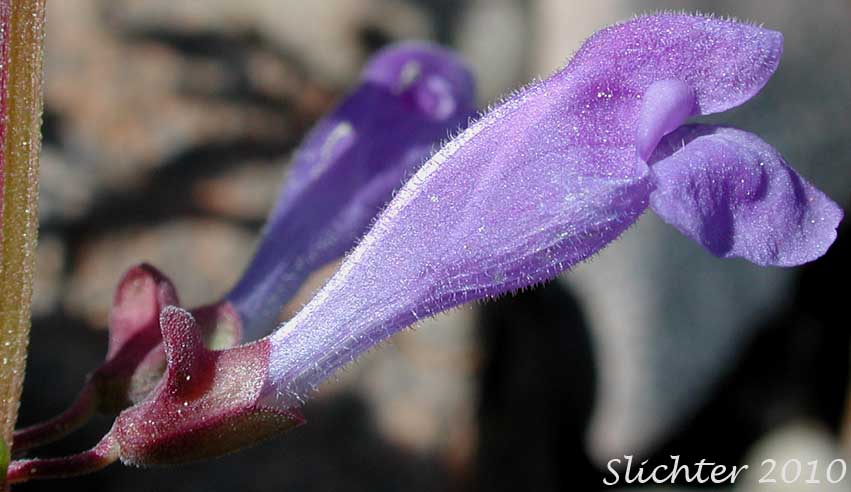
Close-up sideview of the calyx (with dorsal appendage) and corolla of narrowleaf skullcap as seen along Forest Service Road #1647 in southeastern Logan Valley, Malheur National Forest.........July
3, 2010.
Characteristics:
Skullcaps get their name from a small appendage
or flap atop the calyx. Narrow-leaf skullcap is an attractive perennial arising
to heights of 10-30 cm from rhizomes. The slender, erect stems may be branched
or arise in clusters from the rhizome. The stems are square in cross-section.
The herbage is variably haired, ranging from glabrous to short, upward-pointing
hairs, or occasionally longer, spreading or even gland-tipped hairs. The leaves
are opposite with entire margins. All the leaves are found on the stems. The
venation consists of 3-5 nerves or veins arising from the leaf base. Leaf shape
is elliptic to ovate, and the leaves range from 1.5- 2.5 cm long and 3-10 mm
wide.
The flowers are solitary, arising from the axils
of the upper, reduced leaves. The pedicels are 4-6 mm long. The corolla is a
deep blue-violet. The tubular corolla is often curved slightly and ranges from
24-28 mm long and is narrow below and widening rapidly at the distal half of
its tube. The lower lip of the corolla is large, and reflexed downward.. The
palate has long white hairs and the throat of the corolla is open in fresh flowers.
Similar Species: Snapdragon
skullcap: Scutellaria antirrhinoides
Subspecies of Narrow-leaf skukllcap:
Ssp. angustifolia -
Ssp. micrantha -
Habitat:
Narrow-leaf skullcap may be found on rocky, graveled
or talus slopes with dry exposures.
Range:
Narrow-leaf skullcap may be found east of the Cascades
from southern British Columbia south through Washington and Oregon to California.
It may be found eastward to western and northern Idaho. It is found in the middle
and eastern Columbia River Gorge and may occasionally be found in the Willamette
Valley.
Uses:
Narrow-leaf skullcap may be planted in the home
rock garden, but it should be give room, or enclosed within grass edging plastic
as the rhizomes have a tendency to travel, usually where a much preferred plant,
like a Lewisia is growing. With time, it may overgrow or crowd out other plants,
so it should be kept in check. I pull the rhizomes and stems and replant them
in desired areas. The rhizomes re-root readily. The flowers and stems have a
noticeable, sharp, minty scent.
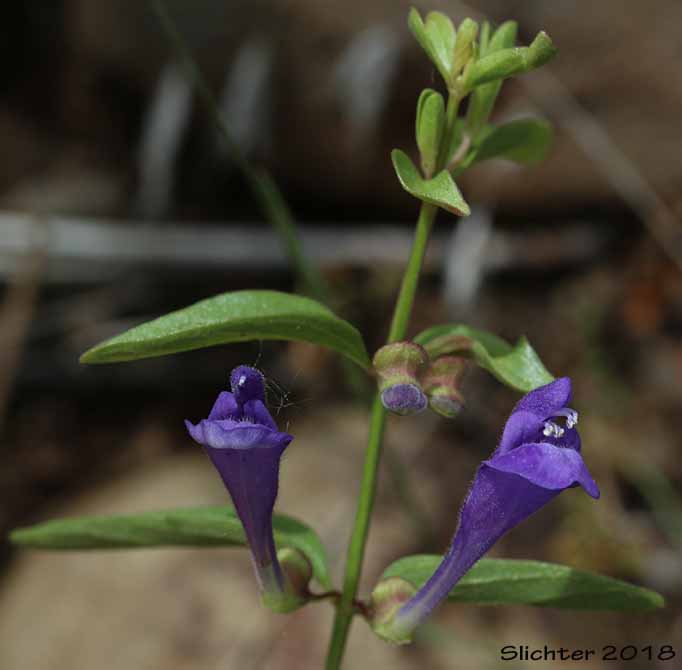 -
- 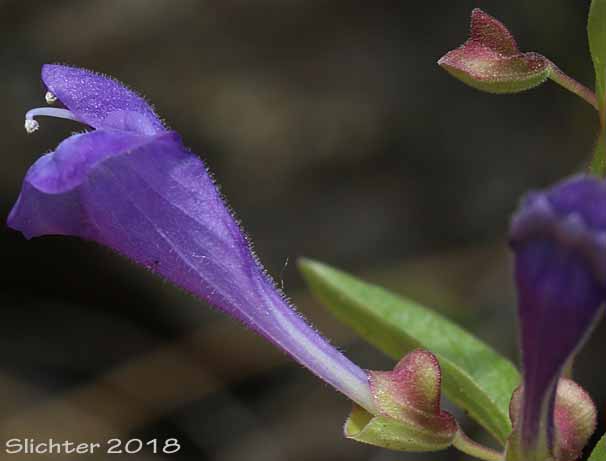
Narrowleaf skullcap as seen along North Pine Creek off Forest Road 39 at North Pine Recreation Area, Hells Canyon National Recreation Area.......June 11, 2018.
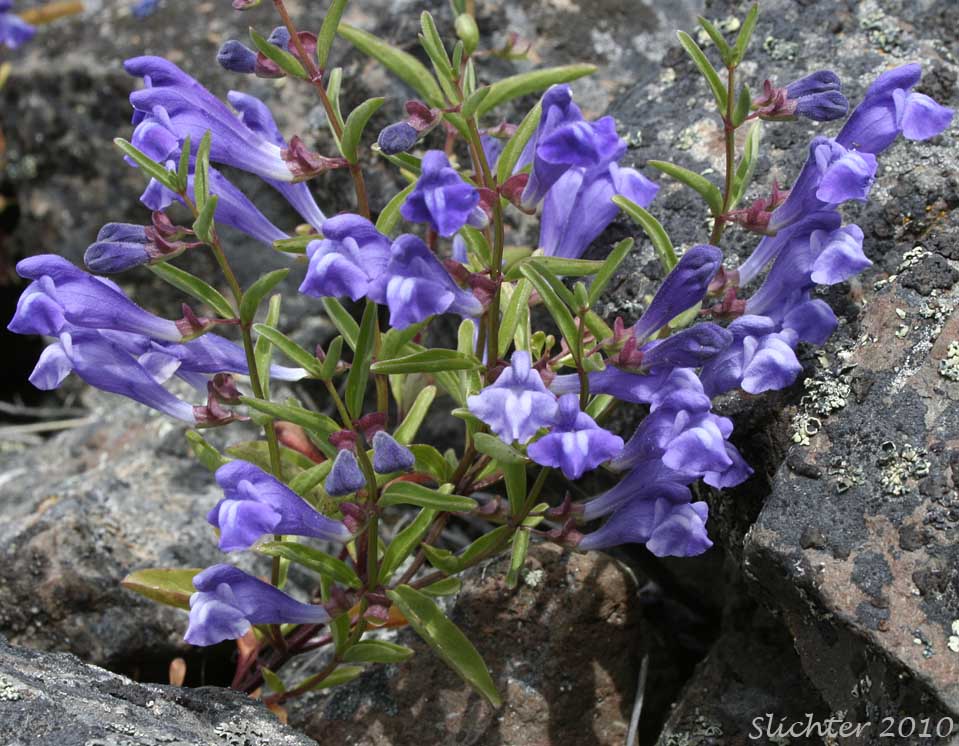 -
- 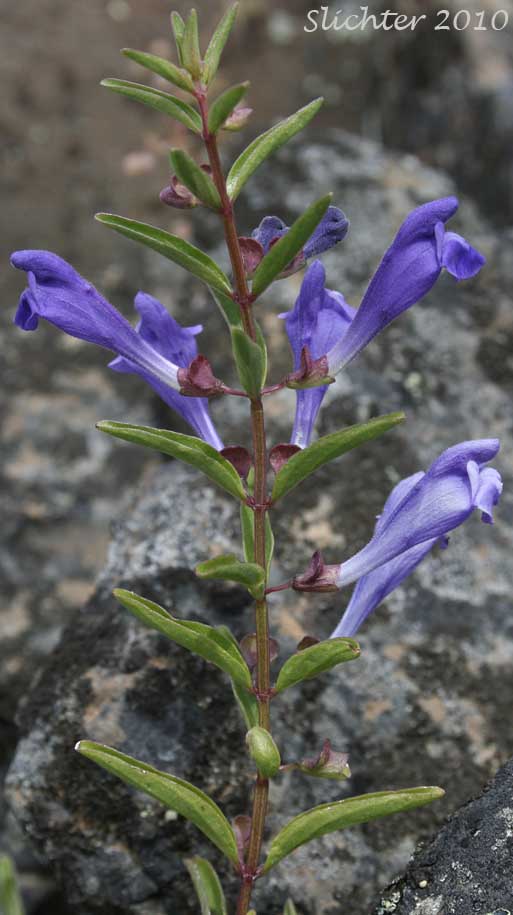
Narrowleaf skullcap as seen along Ramsey Canyon Road several miles south of Condon, OR..........June 30, 2010.
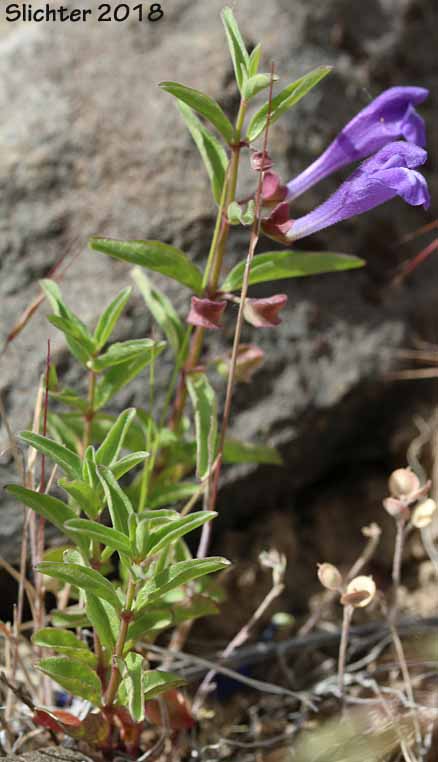 -
- 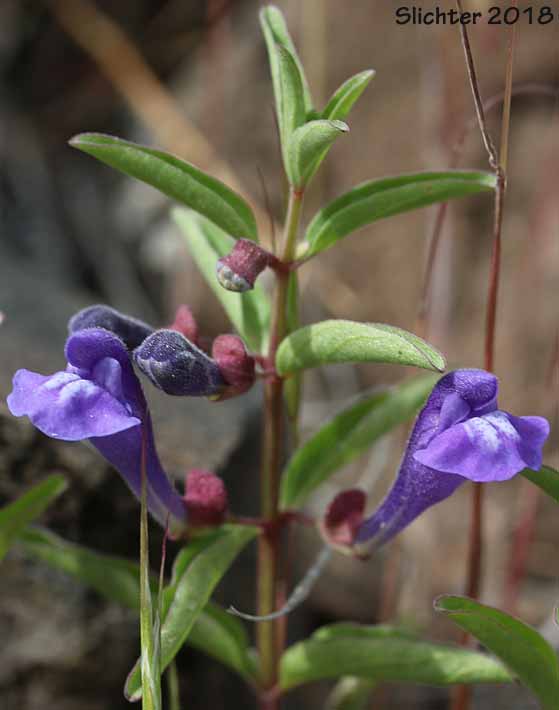
Narrowleaf skullcap blooming along the Chimney Rock Trail, Lower Crooked Wild and Scenic River (BLM).......May 10, 2018.
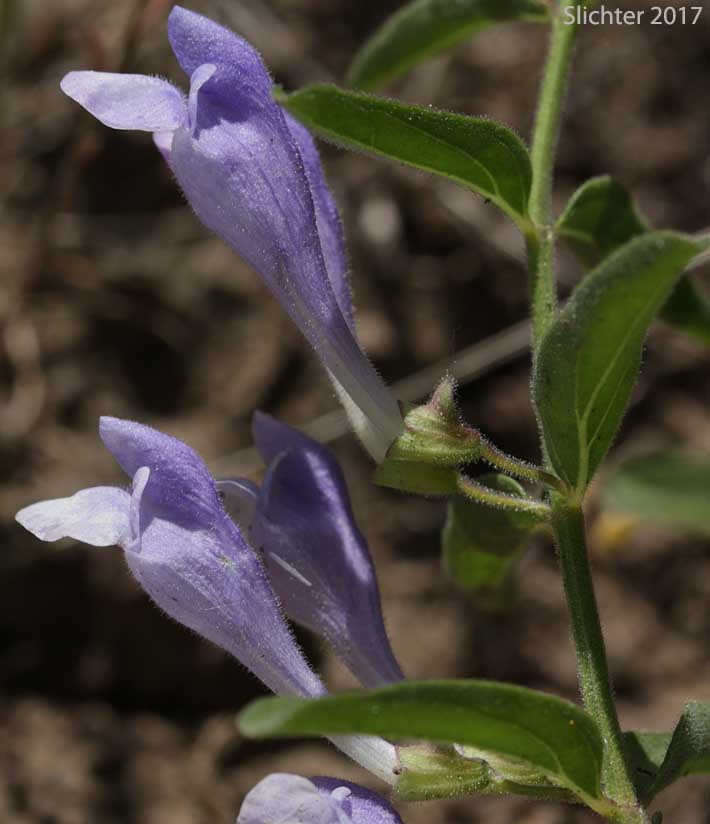 -
- 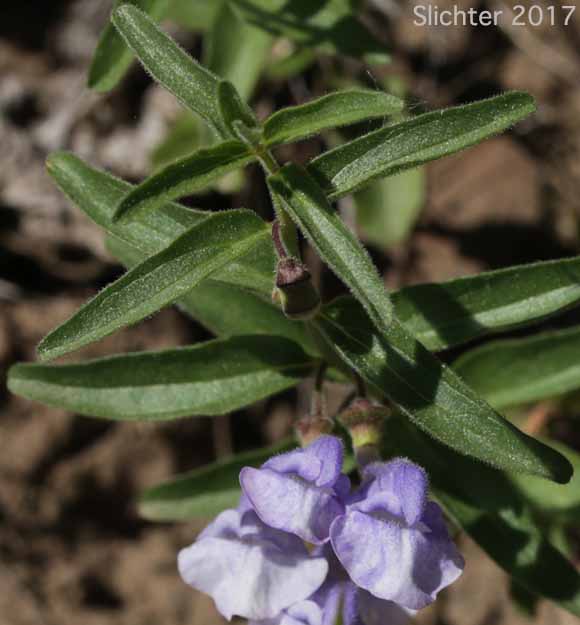
Narrowleaf skullcap as seen on the east-facing slopes of Sourdough Ridge, Asotin Wildlife Area, Asotin County, WA........June 3, 2017.
 -
- 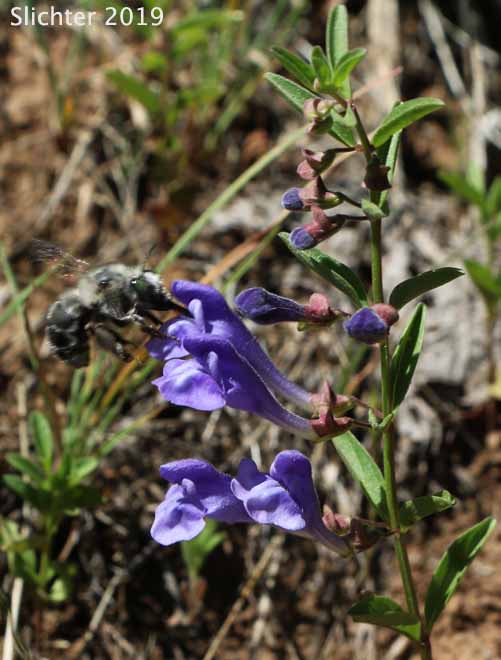
Narrowleaf skullcap observed along the South Prong Trail #821, Black Canyon Wilderness......June 16, 2019.
 -
- 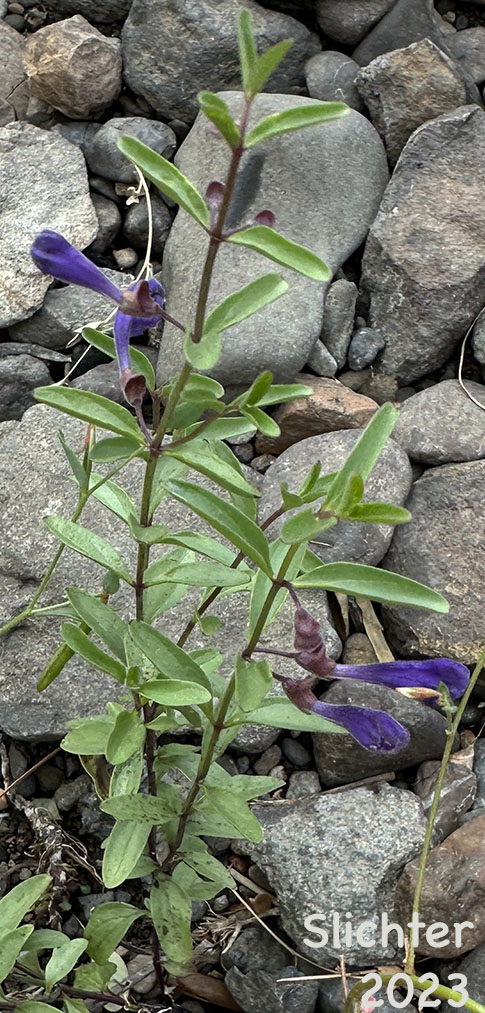
Narrowleaf skullcap observed on the cobble shoreline (near mid-flood stage) along the North Fork Crooked River at Deep Creek Campground, Ochoco National Forest.......September 23, 2023.
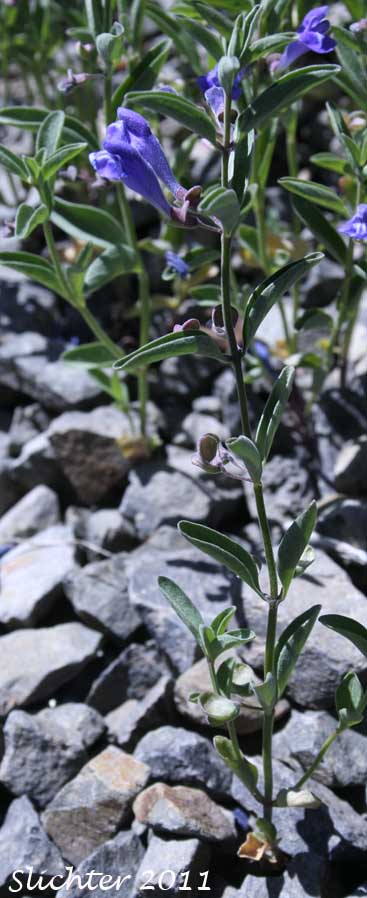 -
- 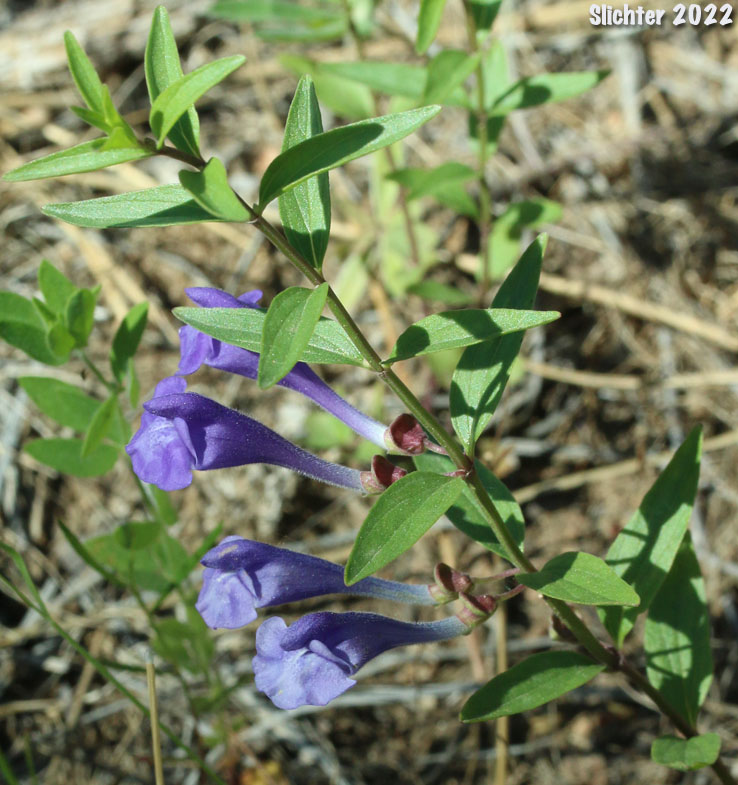
Narrowleaf skullcap seen at left growing in roadside gravels along Forest Service Road 16 in Summit Prairie, Malheur National Forest.........August 4, 2011. The photo at right shows narrowleaf skullcap blooming along the Granite Trail at Waikiki Springs Nature Preserve, Spokane County, WA......June 24, 2022.

Narrowleaf skullcap blooming in grasslands atop Sheep Ridge, Umatilla National Forest.......June 17, 2023.
Paul Slichter















